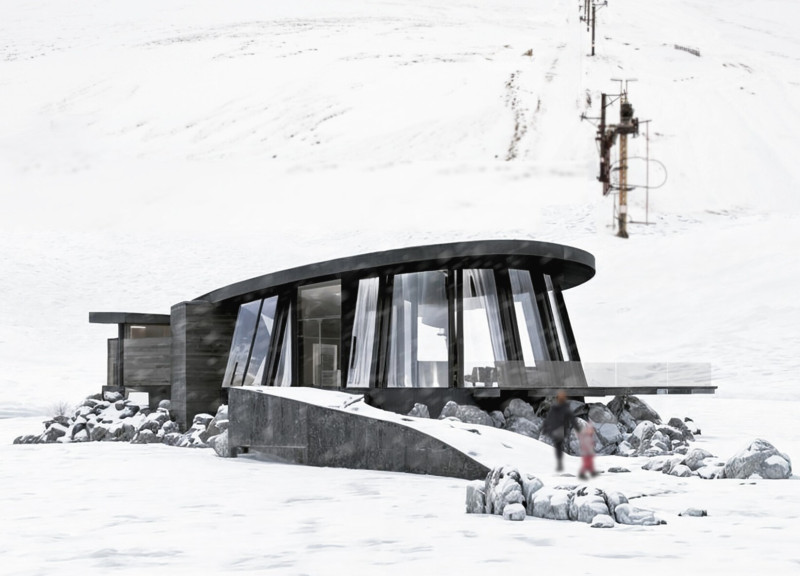5 key facts about this project
At its core, the project embodies a vision of sustainability intertwined with contemporary architectural practices. It utilizes materials chosen for their durability, aesthetic qualities, and environmental impact, emphasizing a commitment to eco-friendly design principles. Concrete, glass, steel, and reclaimed wood form the primary materials, each contributing unique characteristics to the overall design narrative. The use of reinforced concrete provides structural stability, while large expanses of low-emissivity glass invite natural light, creating bright, welcoming interiors. The steel framework adds a modern touch, allowing for expansive, open spaces that enhance the building's functionality. Reclaimed wood introduces warmth and texture, reinforcing the connection to nature that the project strives to achieve.
The spatial organization of the building highlights its multipurpose nature, with areas designed for both individual reflection and collective gatherings. The layout encourages movement through a series of interconnected spaces that flow seamlessly into one another. This thoughtful arrangement not only enhances accessibility but also promotes social interaction, making it a focal point for the community. Features like expansive windows and outdoor terraces blur the boundaries between indoor and outdoor environments, reflecting a design philosophy that values the relationship between built spaces and their natural context.
Noteworthy architectural features include innovative roof designs that contribute to energy efficiency while offering distinctive visual appeal. The project incorporates green roofs and rainwater harvesting systems, underscoring a responsible approach to resource management. These elements not only enhance the building’s sustainability but also provide a unique aesthetic value, as the green roofs contribute to biodiversity and urban greening. The exterior facades are thoughtfully articulated, with variations in texture and material that create visual interest and respond to the local architecture.
A unique aspect of this design is its integration of local cultural elements, which serve to ground the building in its geographic context. By including design motifs or materials that resonate with the surrounding environment, the architecture respects and elevates local traditions, creating a sense of place that is both contemporary and rooted in history. This careful balance of modern and traditional elements fosters a welcoming atmosphere, making the building not just a structure, but a landmark within the community.
The project exemplifies a comprehensive understanding of sustainable architecture while ensuring the functionality and aesthetic appeal necessary for a modern design. It stands as a testament to the capabilities of thoughtful architectural planning, where each decision impacts the overall performance of the building. The interplay of materials, the organization of spaces, and innovative sustainability measures contribute to a cohesive project that serves the needs of its users while honoring its environmental and cultural context.
For those interested in deeper insights into this remarkable architectural design, it is recommended to explore the detailed architectural plans, sections, and other related architectural ideas that illustrate the thought process and intentions behind this project. Engaging with these elements will provide a broader understanding of how this design successfully marries community needs with sustainable architecture, reflecting the essence of contemporary design practice.


























